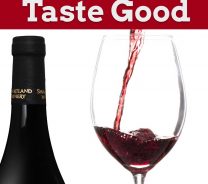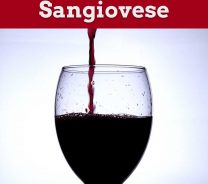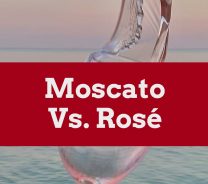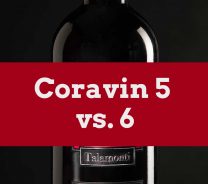Pinot Blanc vs. Pinot Gris
Last Updated on August 1st, 2023
Reader Disclosure Disclosure: We may earn commissions for purchases made through links on our site. Learn more on our about us page.As the Pinot grape made its way through northern Italy, up into the Swiss Alps, and down into the river valleys of France and Germany, it became the varieties of vintages produced today.
Pinot Noir, the original grape variety, evolved and changed to become Pinot Blanc and Pinot Gris.
Both are white wines, in contrast to Pinot Noir, each boasting a nice set of citrus fruit flavors that are favored during the warmer weather seasons.
Pinot Blanc sports more of a pear, peach, and almond zest set of fruity notes, while Pinot Gris leans more cantaloupe, peach, and almond zest for primary flavors.
What are the Similarities?
Right off the bat, both of these white wines come from the grandfather grape Pinot Noir. Each is grown in the Northern Italy regions, along with areas of France, Germany, and the United States.
The Pinot Blanc and Pinot Gris will have strong fruit flavors of peach and lemon citrus and strong flavor tones of almond, crushed gravel, and other earthy notes.
Brother is described as being drier wines, with light to medium-bodied vintages, that have medium acidity and ABV percentages in and around the thirteen percent range. Lastly, each will be best served after aging for around two- or four years in the wine cellar.
What are the Differences?
The first major difference will be in the foods with which these white wines pair, starting with Pinot Blanc’s natural ability to complement the flavors in flaky fish dishes and creamy salads, and it can be fun to drink a cheese fondue event.
On the other hand, Pinot Gris will be best served with summer dishes, lighter pasta with white meats (or meat substitutes), and fresh seafood meals.
The alcohol by volume for Pinot Blanc will be in the thirteen to fifteen percent range, in contrast to Pinot Gris, which will boast percentages closer to the eleven to fourteen percent range.
Pinot Gris will have higher acidity levels and boast fuller-bodied vintages than most Pinot Blanc vintages.
Pros and Cons: Pinot Blanc vs. Pinot Gris
Pinot Blanc is a versatile wine, which as a pro, can be helpful when finding vintage and food pairings to fit every guest’s preferences. The cons will be when you try to cook with it, and there are going to be better selections for this task, so it is best to act accordingly.
The opposite is true for Pinot Gris, which will be a go-to for some chefs when their lighter dishes, such as fish tacos or lighter pasta dishes, need a shot of zest to make them pop.
The con will be the limitations when pairing this wine with foods that only really fit with citrus-based flavored dishes or lighter meat and seafood dishes.
Which wine is More Versatile?
As touched on in the section before this one, Pinot Gris is very good at being a pairing for zesty light dishes and seafood meals. However, when it comes to versatility with food outside that flavor palette, there is going to be room for improvement.
Pinot Blanc is one of the more versatile vintages, especially when it comes to pairing with various food types. Each comes from a similar winemaking process plus sports similar fruity primary flavors and earthy tones.
This ends in a tie, as when you go to cook with these two vintages, chefs will prefer to use Pinot Gris in most dishes over Pinot Blanc, which is hardly ever used in cooking.
Which one Has More Tannins?
Those that are not privy to what tannins are or how they end up in the wine bottles in the first place will need to first think about how the wine is extracted from the grapes. Normally, there is a bunch of squeezing and mashing before the vintage is poured into a bottle.
Red wines will have limited filtering, instead vowing to have more of the natural flavors to contribute over time as the vintage ages.
White wines and Rosés will go through a more thorough filtering process, which removes most or all tannins during the vintage’s bottling stage.
Final Thoughts on Pinot Blanc vs. Pinot Gris
Each of these Pinot white wines will have a dry, light-bodied vintage with notes of peach, raw almond, crushed earth, and lemon zest.
While keeping the acidity lower and the tannin count to zero, Pinot Blanc will have a nice pear difference, to which Pinot Gris will have a cantaloupe difference when you taste these vintages together.
Think about having both of these wines available for guests during an event or dinner party. It allows for a similar flavor profile but enough of a difference to offer a change of pace for longer running time gatherings and social engagements.


















